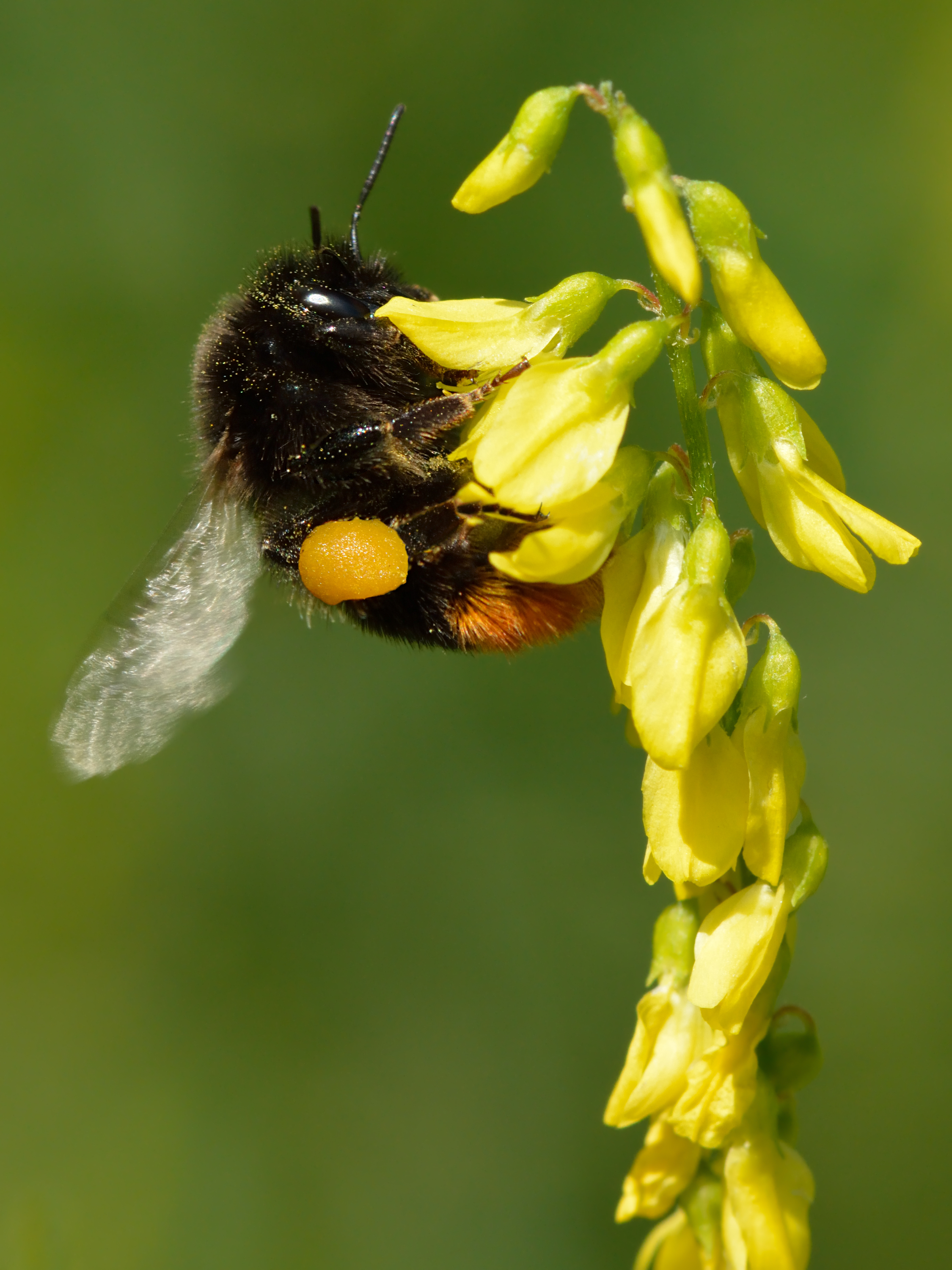|
Bumble Bee
A bumblebee (or bumble bee, bumble-bee, or humble-bee) is any of over 250 species in the genus ''Bombus'', part of Apidae, one of the bee families. This genus is the only Extant taxon, extant group in the tribe Bombini, though a few extinct related genera (e.g., ''Calyptapis'') are known from fossils. They are found primarily in higher altitudes or latitudes in the Northern Hemisphere, although they are also found in South America, where a few lowland tropical species have been identified. European bumblebees have also been introduced to New Zealand and Tasmania. Female bumblebees can sting repeatedly, but generally ignore humans and other animals. Most bumblebees are eusociality, social insects that form colony (biology), colonies with a single queen. The colonies are smaller than those of honey bees, growing to as few as 50 individuals in a nest. Psithyrus, Cuckoo bumblebees are brood parasite, brood parasitic and do not make nests or form colonies; their queens aggressively ... [...More Info...] [...Related Items...] OR: [Wikipedia] [Google] [Baidu] |
Bombus Lapidarius
''Bombus lapidarius'' is a species of bumblebee in the subgenus '' Melanobombus''. Commonly known as the red-tailed bumblebee, ''B. lapidarius'' can be found throughout much of Central Europe. Known for its distinctive black and red body, this social bee is important in pollination. Taxonomy and phylogeny The red-tailed bumblebee is a part of the order Hymenoptera, family Apidae, and the genus ''Bombus'', which includes many species including '' Bombus terrestris '', ''Bombus lucorum'', and '' Bombus hypnorum''. Description and identification The red-tailed bumblebee is typically distinguished by its black body with red markings around the abdomen. Worker females and the queen look similar, except the queen is much larger than the worker females. Males typically have both the red and black coloration along with a yellow band around the abdomen and yellow markings on the face. Further, ''B. lapidarius'' tend to have a medium-sized proboscis, which is significant in that it all ... [...More Info...] [...Related Items...] OR: [Wikipedia] [Google] [Baidu] |
Müllerian Mimicry
Müllerian mimicry is a natural phenomenon in which two or more well-defended species, often foul-tasting and sharing common predators, have come to mimic each other's honest warning signals, to their mutual benefit. The benefit to Müllerian mimics is that predators only need one unpleasant encounter with one member of a set of Müllerian mimics, and thereafter avoid all similar coloration, whether or not it belongs to the same species as the initial encounter. It is named after the German naturalist Fritz Müller, who first proposed the concept in 1878, supporting his theory with the first mathematical model of frequency-dependent selection, one of the first such models anywhere in biology. Müllerian mimicry was first identified in tropical butterflies that shared colourful wing patterns, but it is found in many groups of insects such as bumblebees, and other animals including poison frogs and coral snakes. The mimicry need not be visual; for example, many snakes share a ... [...More Info...] [...Related Items...] OR: [Wikipedia] [Google] [Baidu] |
Mrs Tittlemouse
Mrs. (American English) or Mrs (British English; standard English pronunciation: ) is a commonly used English honorific for women, usually for those who are married and who do not instead use another title (or rank), such as ''Doctor'', ''Professor'', ''President'', '' Dame'', etc. In most Commonwealth countries, a full stop (period) is usually not used with the title. In the United States and Canada a period (full stop) is usually used (see Abbreviation). ''Mrs'' originated as a contraction of the honorific ''Mistress'' (the feminine of '' Mister'' or ''Master'') which was originally applied to both married and unmarried women. The split into ''Mrs'' for married women and '' Miss'' for unmarried began during the 17th century; the 17th century also saw the coinage of a new unmarked option '' Ms'' with a return of this usage appearing in the 20th century. It is rare for ''Mrs'' to be written in a non-abbreviated form, and the unabbreviated word lacks a standard spelling. ... [...More Info...] [...Related Items...] OR: [Wikipedia] [Google] [Baidu] |
Pesticide
Pesticides are substances that are meant to control pests. This includes herbicide, insecticide, nematicide, molluscicide, piscicide, avicide, rodenticide, bactericide, insect repellent, animal repellent, microbicide, fungicide, and lampricide. The most common of these are herbicides which account for approximately 80% of all pesticide use. Most pesticides are intended to serve as plant protection products (also known as crop protection products), which in general, protect plants from weeds, fungi, or insects. As an example, the fungus ''Alternaria solani'' is used to combat the aquatic weed ''Salvinia''. In general, a pesticide is a chemical (such as carbamate) or biological agent (such as a virus, bacterium, or fungus) that deters, incapacitates, kills, or otherwise discourages pests. Target pests can include insects, plant pathogens, weeds, molluscs, birds, mammals, fish, nematodes (roundworms), and microbes that destroy property, cause nuisance, or spread disease, or a ... [...More Info...] [...Related Items...] OR: [Wikipedia] [Google] [Baidu] |


